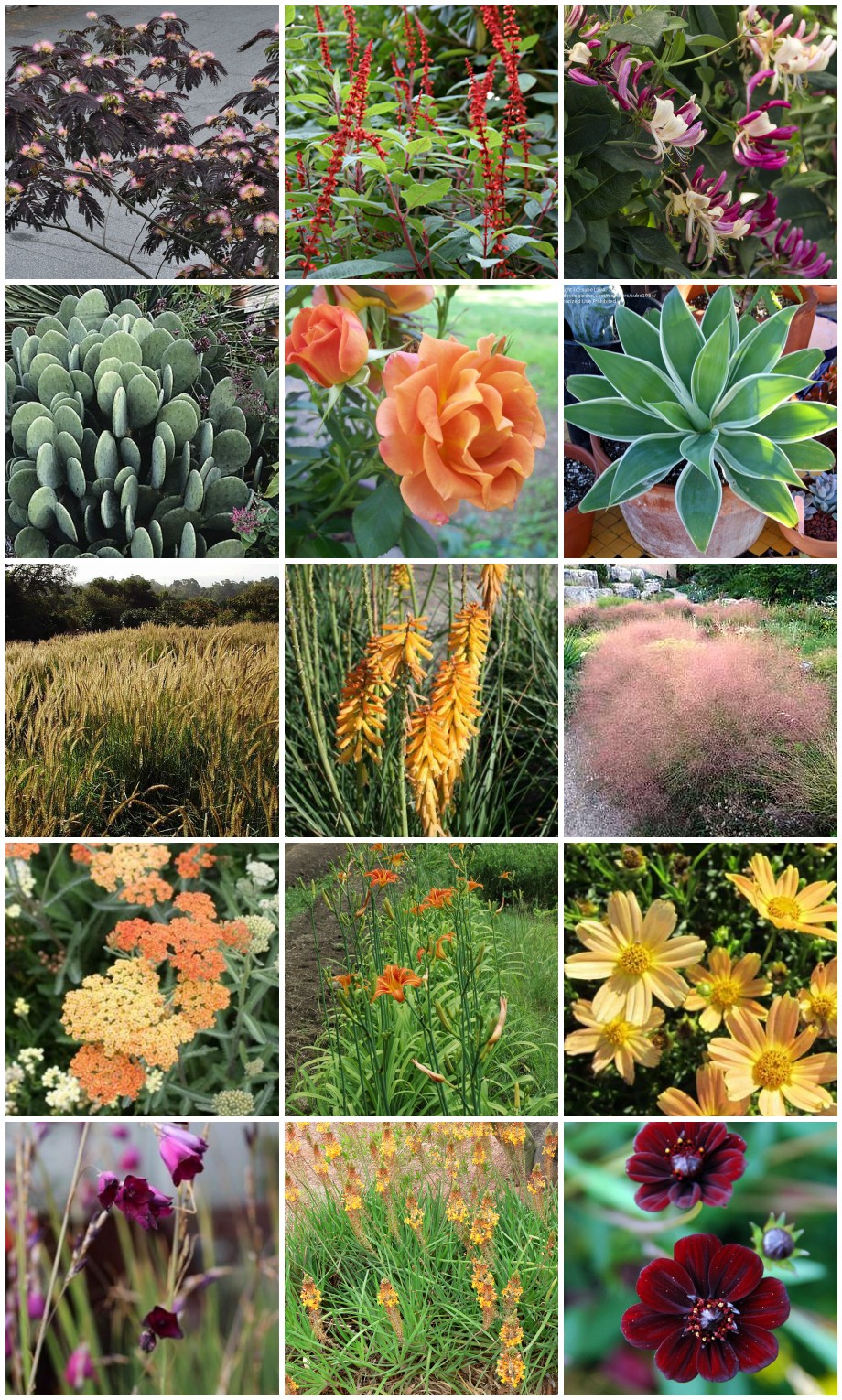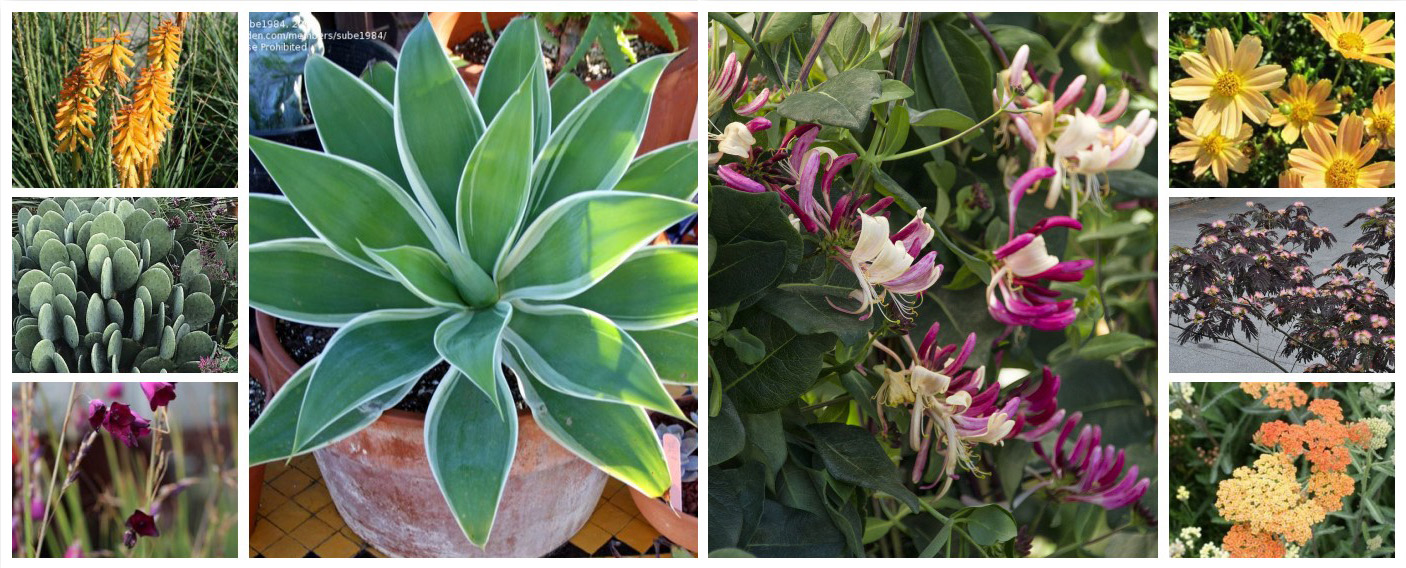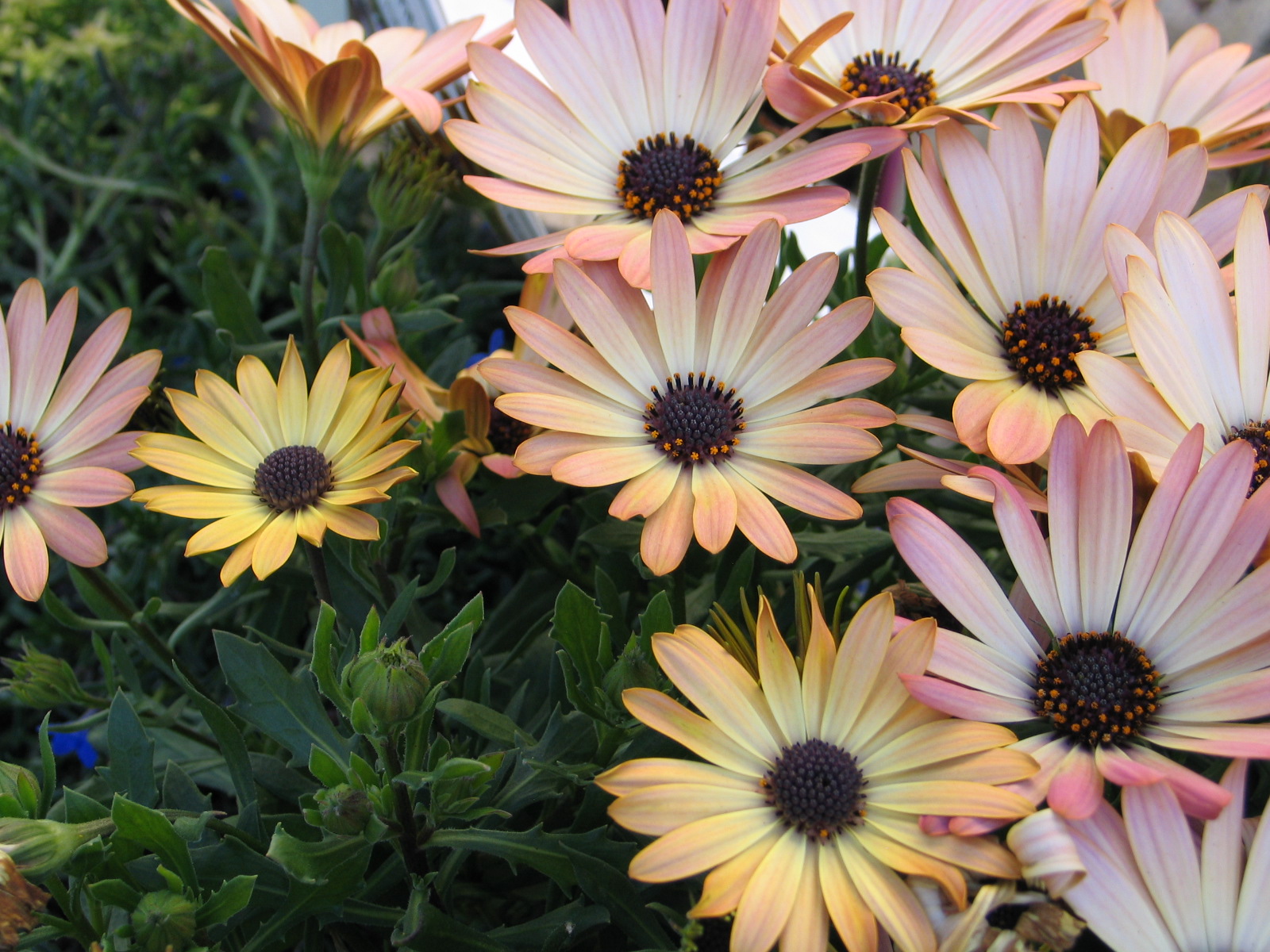Back here, I talked about the conceptual design process, where I developed and sent over design concepts with a memo full of notes to the Owners. I sent all this via email because they live in Southern California and I live in Northern California, about a 6 hour drive away, so in-person meetings aren't always feasible. I also know the Owners pretty well - the husband is an Architect I have worked with, and the wife has a background in Interior Design - so I trusted that they'd be able to read the memo alongside the concepts and make an informed selection of their favorite. They did exactly that, sending me back comments on their preferred designs and I will now start to draft the designs for use in preparing construction drawings (so hang tight...)The next thing to do is develop the Schematic Design. In Schematic Design, I will make sure that the Conceptual Design evolves to have elements represented at actual size while I strive to hold true to the concept and incorporate their comments. For example, I will make sure that any paths are an appropriate width, furnishings are represented at their real measurements, gates, paving patterns, fencing, materials, etc will begin to be discussed, but I won't change the overall intent. I'll try to remember to share that when it is accomplished.... for now, one of the elements that needs discussion is a planting palette. In every phase of design, I imagine the feel of the place, and few things have more impact on that than the plants!What I'm trying to get at here is that in addition to designing for plants that will thrive in the same sun exposure, watering practices, soil type, climate zone, etc there's an importance to gathering plants that want to be seen together. The plants bring more than just leaves and color, they bring personality (and seasonality!) to the place. The plants and the concepts (at least for me, others may work differently) are not separate discussions, but both part of a larger vision. For this project, I made a huge list of plants I thought would work in San Gabriel as well as plants I thought the Owners would like. I imagined the designs as real spaces, re-imagining them repeatedly with different planting palettes until I had edited the lists down into a concept for the planting palette.Now, this does not represent the layout of the planting palette, and any plant geek can see that I've got some hydrozoning to do (putting low water use plants together and irrigating separately from higher water needing plants). That will happen in future phases, but for now, I am playing with a planting palette as a preliminary concept. For the rear garden, I chose lots of green foliage plants with what I equated to a "Hollywood / tropical" palette with many plants that could also grow in Texas (the Owners are from Texas, which is where I know them from). I did the same exercise for the front, but without the Hollywood / tropical aspect to it. Don't ask me why, that's just the direction it went.The front garden and the rear garden for this project are imagined with different vibes, but that doesn't mean that we can't use some of the same plants in both and we should! Having the two be completely distinct runs the risk of making their property seem disjointed. Take a look at the preliminary palette for the front garden (above) in contrast with the preliminary palette for the rear (below):They seem very different at first, but both have the same Honeysuckle vine in common and the same Agave. Each of the little square photos shows each plant at the same size, and of course we also aren't demonstrating how much of each plant there will be, nor giving a complete idea of their forms.... their impact in real life based only on visual impact could look much more like this for the front:and like this for the rear:See how they relate but take the same impact plants in different design directions? isn't that trippy?! I'll repeat this exercise with materials and furnishings, and the hope is that the whole mess will come together and become more than the sum of its parts.Years ago, when I worked on a pro-bono project with this Owner and had a conversation where he explained to me that the building he had designed had to be white. It wouldn't be the same building if it was not white (I was vehemently against it being white, I thought it was unsympathetic to the landscape). We had what must have been an amusing and fervent "discussion" for any flies on any nearby walls, and in the end, he convinced me. The color was not just a tacked-on thing at the end, it was integral to the spirit of his design. What I'm describing here is that lesson brought forward in my career and applied to my own work. In designing the outdoor environment and making connections to indoor spaces and people, one shrub does not always do the same job as another, and plants are not so interchangeable as one might hope. So stay tuned for the results - between me and the Owners, their home, and the process of refining the design, the end result is always a little bit of a surprise. I will be excited to see how the process progresses with them, and then to see it installed?! holy heck, I can't wait.
Graphics Bootcamp - better for my students or me?
I taught a new class (new to me) this month at UC Berkeley Extension: Graphics Bootcamp, it finished up this past weekend. It is two full 8 hour days of instruction held on two consecutive Saturdays. Since I hadn't taught this before, I had a lot of preparation to do which was fun to pull together. I did most of my planning at my favorite coffee shop, Julie's in Alameda, so I could focus. Being at Julie's begins a whole other story for another time (check back next month - early October). First I looked through my favorite books on landscape graphics:From left to right above, that is an old edition of Drawing the Landscape by Chip Sullivan, an old edition of Landscape Graphics by Grant Reid, my 3-ring binder of images and drawings (kickin' it old school with the binder), the relatively new book Freehand Drawing and Discovery by one of my favorite people James Richards, Drawing and Designing with Confidence by Mike Lin, the current (Sept 2014) copy of Landscape Architecture Magazine put out by the ASLA that had some nice concept sketches in it, and my big pile of notes, exercises, and general mayhem (in the orange folder) see below:Then I watched about 12 hours of how to videos on YouTube. I borrowed exercises from the books, made some up, tried all of them against a timer, wrote the syllabus and my own lesson plan list, gathered inspiring links and images on Pinterest and stuffed a black and decker toolbox full of colored pencils, pens, pastels, markers, and so forth. I steeped myself in beautiful drawings for about a month. I was surrounded with color and texture and started to realize that the pressure of doing everything faster while I was working for others, the drive to take everything to the computer, to use technology, had allowed me to set up some uncreative habits.Now with class done, I don't want to use the renderings I am about to send to a client - renderings I did in Photoshop that will probably suffice, but did not necessarily take less time than if I'd done the work by hand. I believe that I can do the renderings faster by hand, and they will be more interesting. The only drawback is that there are more steps - in Photoshop I sit here entering information on the computer, and then my work is instantly available to be emailed because it is already digital. There are no trips to the local print store, no scanning an oversize sheet, none of that. What it lacks, and maybe this is the fault of my Photoshop skills, is a certain amount of soul. Don't get me wrong; I have a Wacom drawing tablet that allows me to make a drawing on Photoshop look like it is hand-drawn, but there's still something about touching markers and colored pencils to real paper that adds an intangible bit of heart.I've heard the adage that 'if you want to learn, teach', and I suppose I knew that I would learn a great deal by teaching a new subject. However, what I did not expect was how completely inspired and excited I would become in the process. You can expect that the next project I post will have hand-drawn graphics to go with it.
Marketing (or not) With My Clients' Homes
I think I did it right. I started designing gardens before I knew that was what I would "grow up" to do. My first forays into site design as a kid included a fantasy plant nursery, pet store, and flower shop. My parents' back yard was the subject of many site plans as well, though they didn't implement my thoughts.I earned my BLA (Bachelors of Landscape Architecture, a 5 year degree), got my first "real" job, and after a few years, began taking my own projects on the side. This year I started teaching and finally went full-time as my own boss. I have essentially spent all my free time for the last mumble-mumble years absorbed in design, gardens, plants, and everything related.You would think that I would have no shortage of beautiful built projects to share online, adding new ones all the time. Below is part of why I don't put a full body of work in public online places:Naturally, many of the projects I've worked on have been with former employers. Many of them are my work or at least partly so, but the former employer owns the intellectual property. I can put the work I did in my own portfolio, that is industry standard, but it is not kosher to put that stuff on my own website or blog to promote myself apart from promoting the company I worked for at the time. In addition to that, I have agreements with some former employers that state I won't put anything online that came from my employment with them, and some clients and I have similar agreements. Not marketing with clients' projects can be limiting in this age where everything is available at a click, but there ya go.I respect the wishes of my clients and some of them are more particular about their privacy than others. I never post or put online anything that a client would like to keep private. For some of them, that is everything. The work I do is often someone's home, and I totally get wanting to keep home private!Additionally, a garden is never done. The design work is only a portion of making a quality outdoor environment. A great many projects are phased in for budget reasons or other limitations (this can take years!), and it also takes time for the plants to grow in. In a recent post on a project in Italy, you can see that the photos I posted span about 2 years - after two years, that garden is just getting to the point where it looks good enough to take photos and post them. If I had posted it too early, it would not have had the same ability to represent what the intention was in the first place.I am incredibly fortunate to work on amazing projects with amazing people - whether their own home, a rental, or a commercial or institutional project, there's opportunity for discovery, beauty, and environmental benefits all around.... so am I still doing it right? I sure hope so.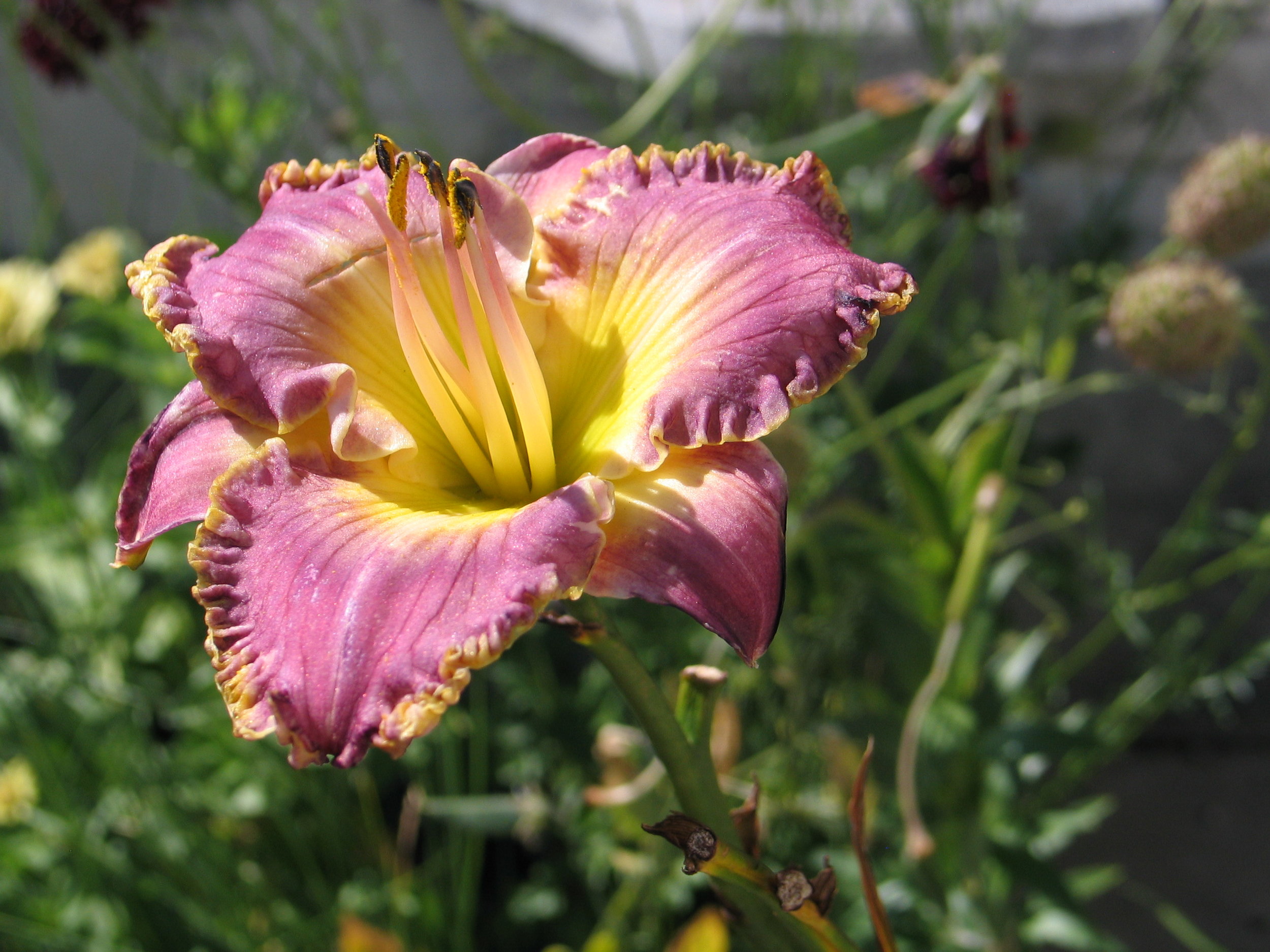
True Colors (not what the interwebs says)
I love the internet, I really do. Seriously, I rely on it for all sorts of things. None of this is new information for you, savvy reader, but here's something that drives me absolutely bananas (you know it's serious because I don't even like bananas!)Here's a screen shot of Helleborus 'Onyx odyssey' from an internet image search: 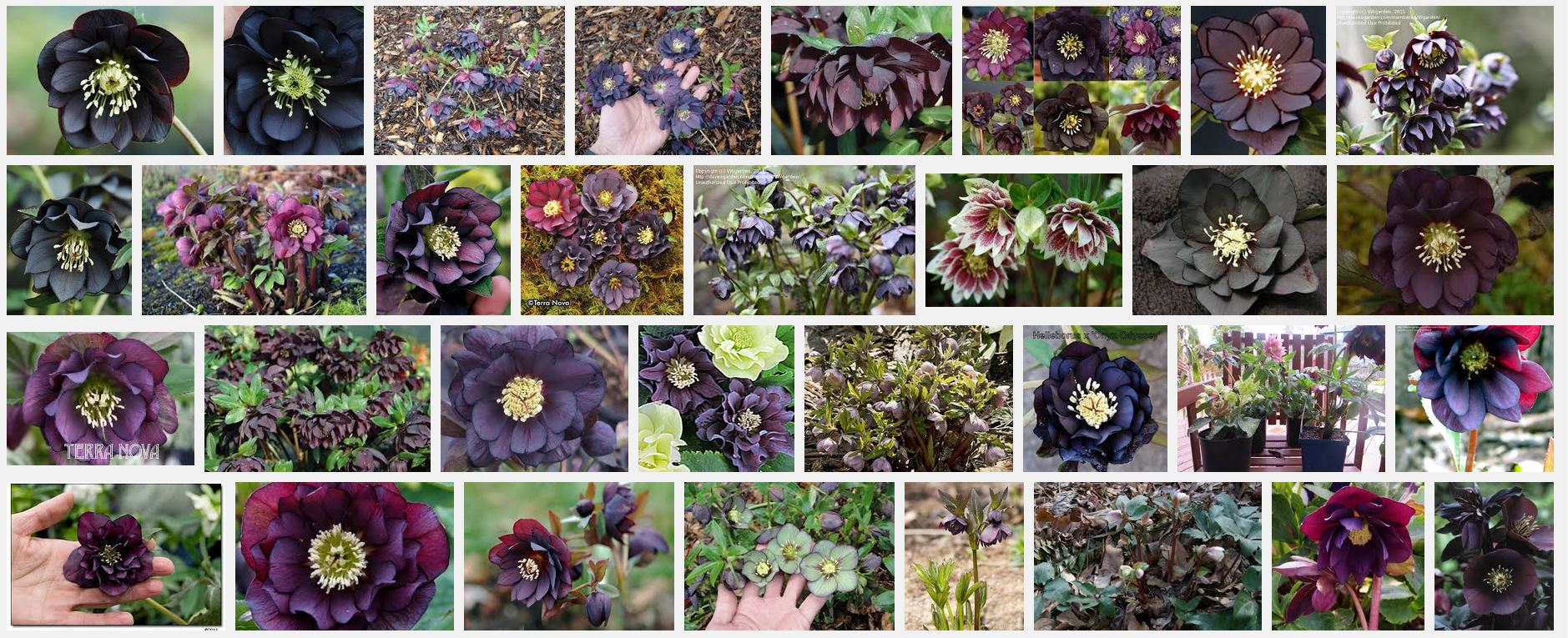 The majority of the photos above are a black or slatey near black color. From a collection like that, the black-flower-hopeful would expect that this plant was a true black or at least so ridiculously dark flowering that it didn't matter.I recognize that cameras and monitors vary in their abilities to accurately represent color, I have no issue there. My issue is more of an honor-code type thing. Below are some photos I took of this same cultivar in my old apartment patio:
The majority of the photos above are a black or slatey near black color. From a collection like that, the black-flower-hopeful would expect that this plant was a true black or at least so ridiculously dark flowering that it didn't matter.I recognize that cameras and monitors vary in their abilities to accurately represent color, I have no issue there. My issue is more of an honor-code type thing. Below are some photos I took of this same cultivar in my old apartment patio: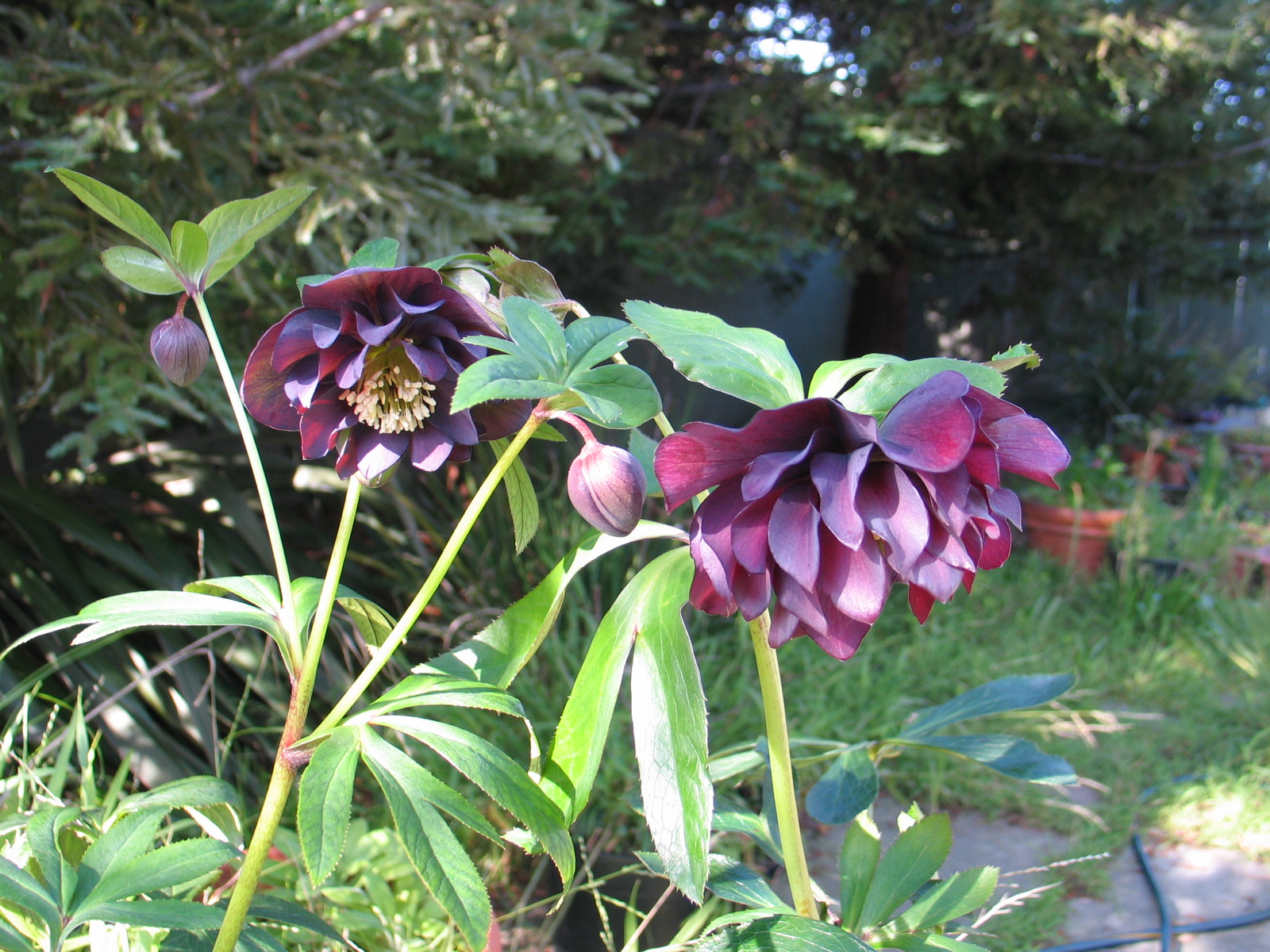
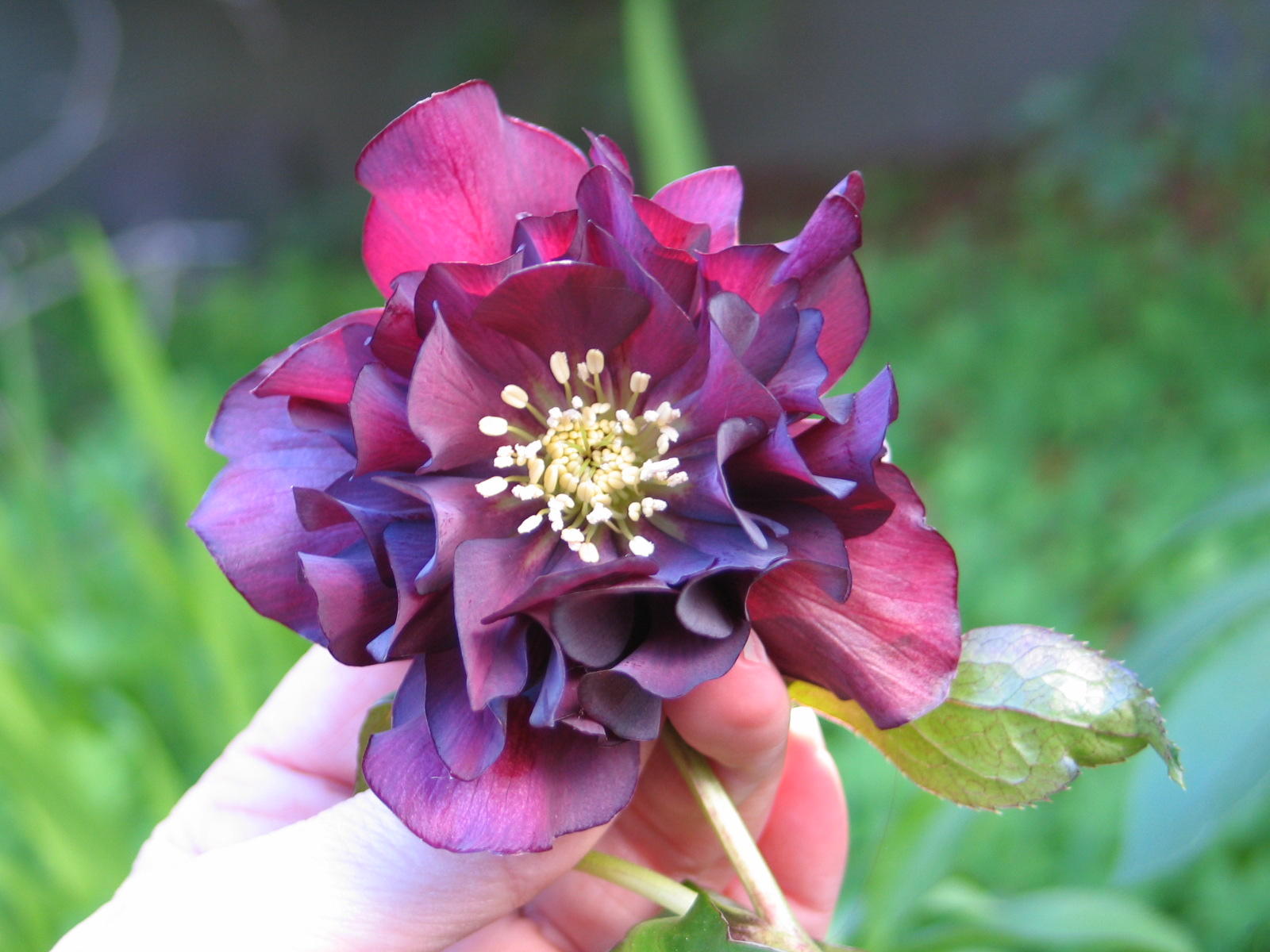
 I find it important to photograph plants and flowers in the shade and the sun, and with different kinds of backgrounds and other things in the shot like ambiguous planty backgrounds and also my own hand. The camera automatically makes adjustments depending on what is in the picture - and then if I were to adjust the color in Photoshop, there are algorithms that make assumptions about what the color was supposed to be.For my design work, the internet serves as a great starting point and a place to see as many different images of the same plant as I possibly can. However, I've learned to mentally visualize colors of plants and flowers from web searches, and also to take into account the quality of the photos and the lighting.I try to grow as many different plants as I can at home (more on that later) so that I can have the best possible understanding of a plant's color and habit. I keep an extensive collection of photos that I've personally taken so I can track the same plant under as many light and growing conditions as possible, and so that I have a mind's eye recollection of each plant.My complaint, if you can really call it that, is that clients can find color-adjusted and completely unrealistic photos online, and expect that their plants will look just like that. Plants are amazing, gorgeous, living things.... but they're not always the supermodels (also usually photoshopped) that some catalogs would have us believe. Every once in a while, they become mere mortals like the rest of us. Beautiful in their own right, but not exactly as depicted.So please - don't be taken in by a great photo. Check them all. Consider before you fall in love if you're enamored with the image or the plant itself. We all deserve to be loved for who we are, sans photoshop.
I find it important to photograph plants and flowers in the shade and the sun, and with different kinds of backgrounds and other things in the shot like ambiguous planty backgrounds and also my own hand. The camera automatically makes adjustments depending on what is in the picture - and then if I were to adjust the color in Photoshop, there are algorithms that make assumptions about what the color was supposed to be.For my design work, the internet serves as a great starting point and a place to see as many different images of the same plant as I possibly can. However, I've learned to mentally visualize colors of plants and flowers from web searches, and also to take into account the quality of the photos and the lighting.I try to grow as many different plants as I can at home (more on that later) so that I can have the best possible understanding of a plant's color and habit. I keep an extensive collection of photos that I've personally taken so I can track the same plant under as many light and growing conditions as possible, and so that I have a mind's eye recollection of each plant.My complaint, if you can really call it that, is that clients can find color-adjusted and completely unrealistic photos online, and expect that their plants will look just like that. Plants are amazing, gorgeous, living things.... but they're not always the supermodels (also usually photoshopped) that some catalogs would have us believe. Every once in a while, they become mere mortals like the rest of us. Beautiful in their own right, but not exactly as depicted.So please - don't be taken in by a great photo. Check them all. Consider before you fall in love if you're enamored with the image or the plant itself. We all deserve to be loved for who we are, sans photoshop.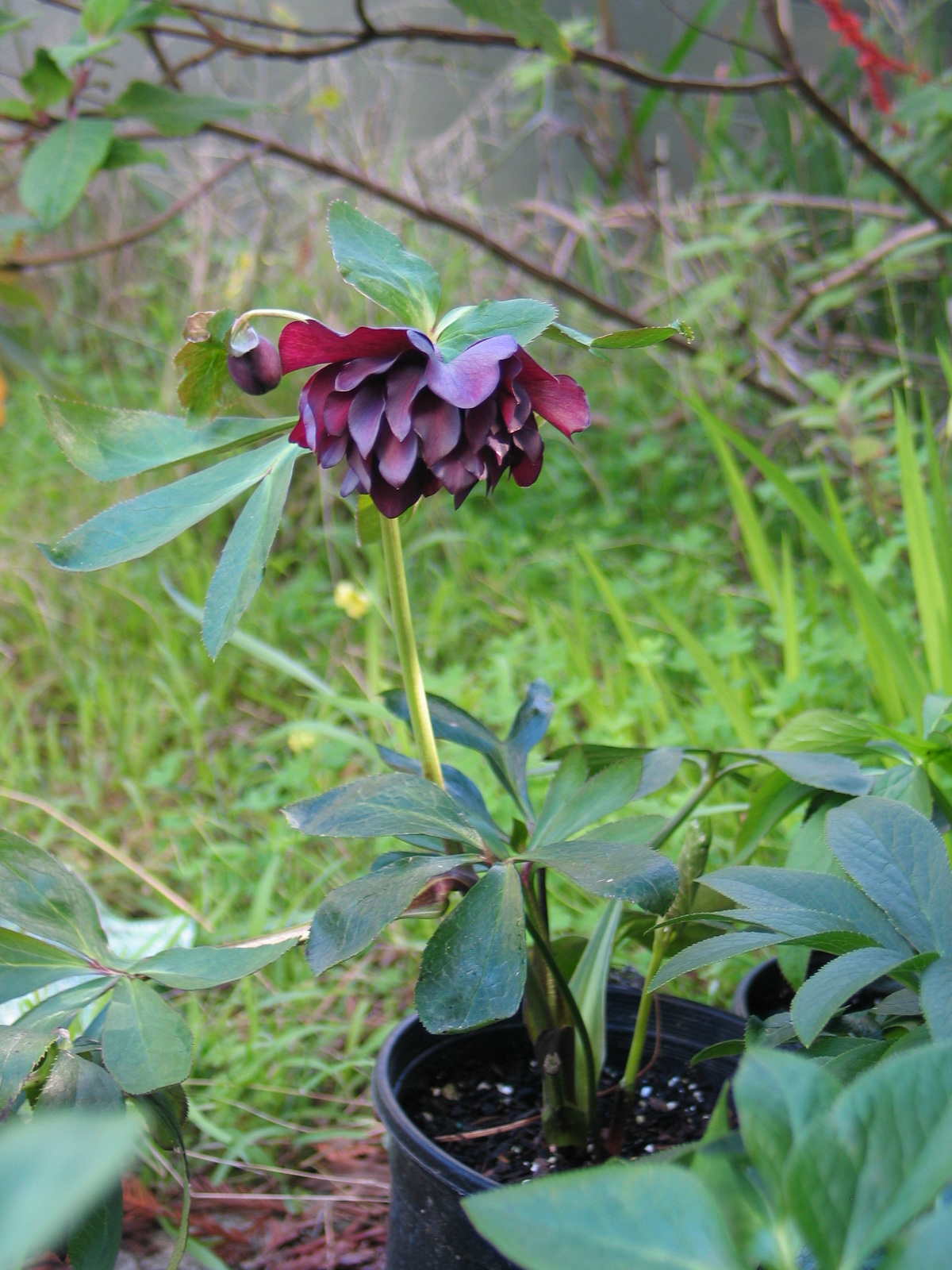
Associations
I read Studio G's blog often, it is a wonderful source of entertainment for me. I recently stumbled across this post, clicking on it because of the title "Religion & Garden Design". Read it.Reading that gave me the nudge I needed to finally mention associations here, they are powerful and invisible aspects of design work that must never be ignored. The better designers understand that they must get to know their clients so that subtle, personal conflicts of negative associations can be avoided and positive associations used for inspiration. Consider the meaning in shapes, colors, plants, orientation (East/West), and views.For example: when I see Beautyberry (the plant image in Studio G's post) I remember the Dallas Arboretum, visiting my friend Melinda, and working at a wonderful Dallas Landscape Architecture firm with wonderful people.The smell of Tomatoes reminds me of my childhood in Southern California, as does for Australian Tree Fern, Mother Fern, Amaryllis belladonna, Agapanthus, and Tuberous Begonias (especially the orange ones).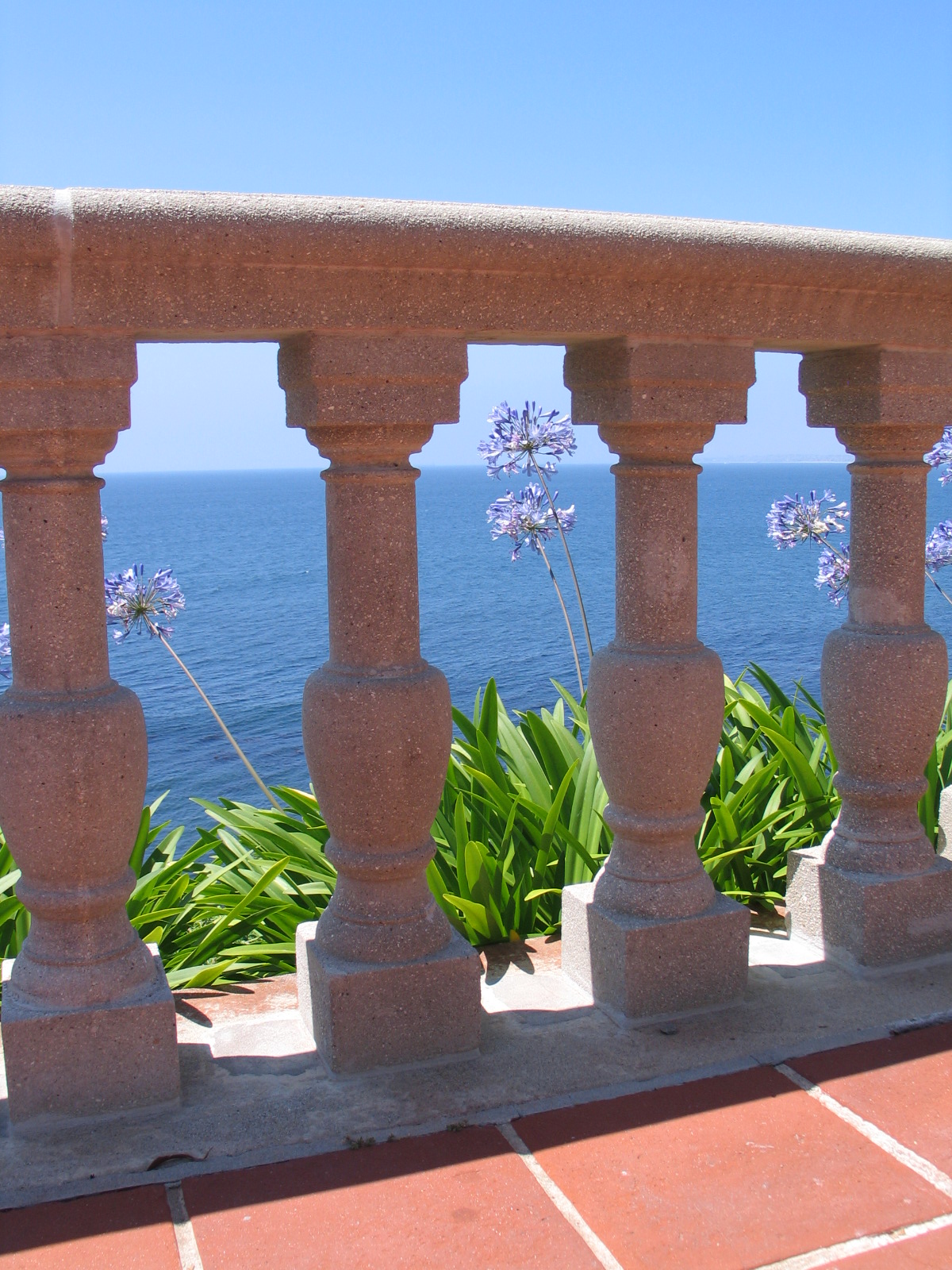 Red and yellow together remind me of Mc Donalds, which I don't think very highly of....I've seen Topher Delaney speak about her landscape work a couple of times, I also met her once at a lunch. At the beginning of a project, she asks her clients to tell her about where they lived when they were little. They have a conversation and get to know each other. She uses this more personal understanding in her design work and succeeds in bringing more meaning to the work than most.So - who are you designing for? ....and how will the design meet their needs, bring meaning, or make it beautiful for the eye of the beholder?
Red and yellow together remind me of Mc Donalds, which I don't think very highly of....I've seen Topher Delaney speak about her landscape work a couple of times, I also met her once at a lunch. At the beginning of a project, she asks her clients to tell her about where they lived when they were little. They have a conversation and get to know each other. She uses this more personal understanding in her design work and succeeds in bringing more meaning to the work than most.So - who are you designing for? ....and how will the design meet their needs, bring meaning, or make it beautiful for the eye of the beholder?
Why Client Questionnaires Suck, pt. 2
Modative blog post: I receive updates on this architecture firm's blog when they add a new post, and I thought it was interesting when they recently posted about their client questionnaire, so I thought I would share it (please notice that to their credit, they ASK these questions in person). I like their blog and that they are sharing their processes so openly.I still think written questionnaires are a bad idea. I think it is far more important to encourage an open dialog and be responsive to the dynamics of the design process than anything else (some of those answers could change). Also note that only the last question, number 10, opens the door to 'getting to know' the client. Some clients aren't very open, others may give too much information, and they don't always like ideas presented.My first post on client questionnaires gets more traffic than anything else I've written here. I suspect that there are a lot of aspiring designers out there looking for examples of the best questionnaires. I did this, too, early in my career. I've even got a few oldies saved on the computer, but I don't use them.Unlike designing for a public, institutional, or commercial facility, when designing for people's homes, the Owners need to work with someone that they can trust above all else. Someone who will listen and ask questions, then interpret the answers and produce a solution that the client will like (preferably LOVE).Designing for others isn't like any other relationship. The designer needs to get inside the client's head a little, ask some personal questions (about money, lifestyle, privacy concerns, aesthetic preferences). Whether you're designing an interior, structure, or garden, this is an involved and personal process.All clients need to know that you are a professional, but they also need to feel that you care about them and their project. They need to believe that you will treat their investment responsibly, keep private information private, and deliver something beyond their dreams. Developing a relationship that advances the open communication needed is one of the most important skills that a designer can have.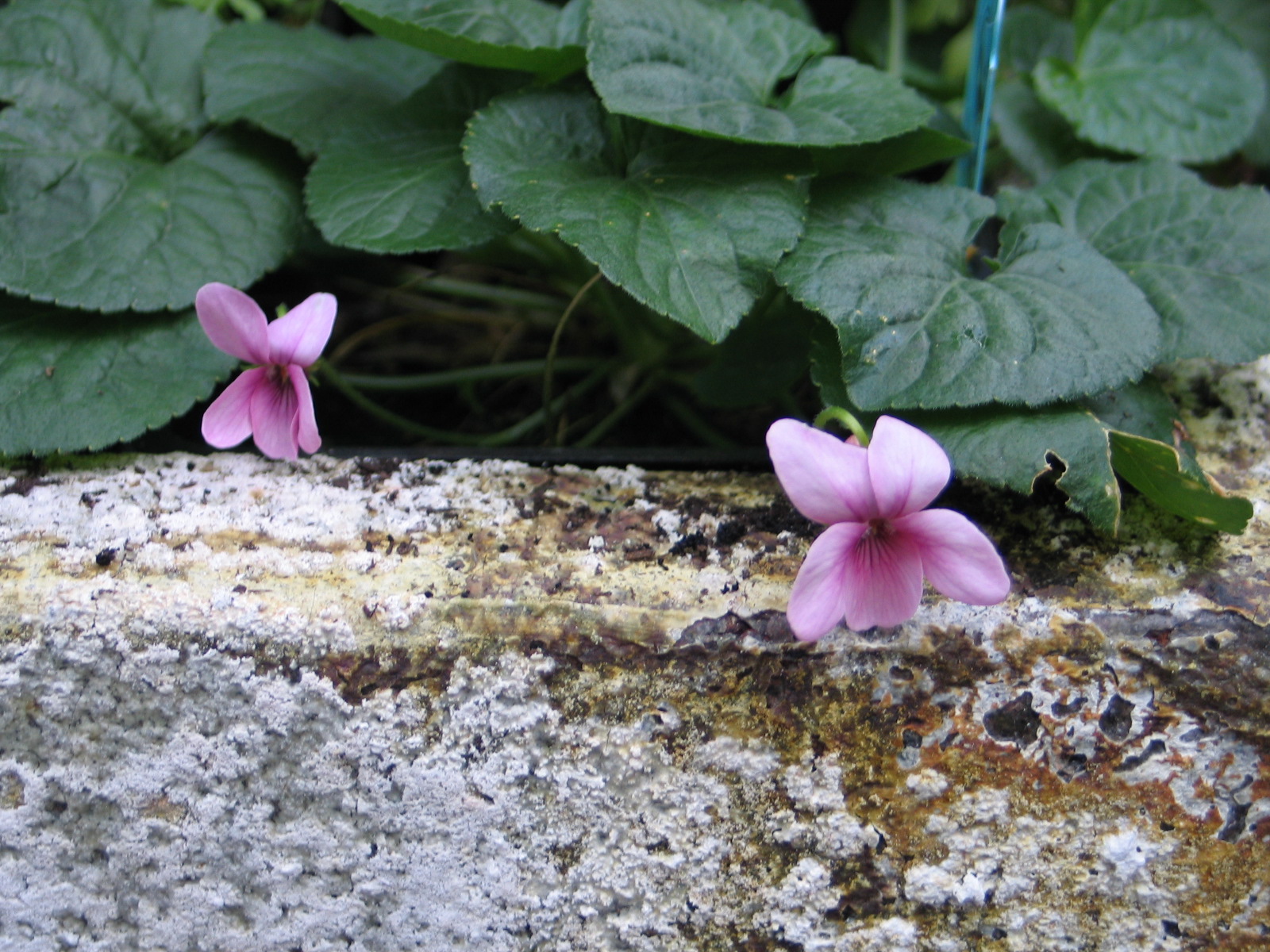 Here's a story from my experience: I once worked for a small design/build firm for a short time. I advanced the design development phase of a large and historically significant home. The Owners were out of town a lot, so it took a while to schedule a meeting, but the company had been working on the project for a while already. I read the correspondence and found the company's client questionnaire. The only notes I found regarding aesthetics were written by the client on the (mailed) questionnaire. They noted that they did not like the color orange or Roses. Okay then - I designed around what would be appropriate for the stately old home, avoiding orange flowers, orange foliage, and Roses. We finally met, and they brought images with them of things that they liked. After some discussion, it became clear that the only images they responded to favorably included chartreuse foliage and white flowers. In fact, they requested that we include shrub roses!!
Here's a story from my experience: I once worked for a small design/build firm for a short time. I advanced the design development phase of a large and historically significant home. The Owners were out of town a lot, so it took a while to schedule a meeting, but the company had been working on the project for a while already. I read the correspondence and found the company's client questionnaire. The only notes I found regarding aesthetics were written by the client on the (mailed) questionnaire. They noted that they did not like the color orange or Roses. Okay then - I designed around what would be appropriate for the stately old home, avoiding orange flowers, orange foliage, and Roses. We finally met, and they brought images with them of things that they liked. After some discussion, it became clear that the only images they responded to favorably included chartreuse foliage and white flowers. In fact, they requested that we include shrub roses!!
My Client's Plants
I am working on the design of a garden in San Francisco and was pleasantly surprised today by the delivery of the Hellebores that were ordered from Canada. While I was potting them for protection during their wait to be installed at the site, it occurred to me that this shipment of plants represented some thoughts on customer service and the design/construction processes.Most Landscape Architecture firms would not be able to accept delivery of plants for a client and care for those plants until they could be installed. They might rely instead on either using only the plants that are seasonally available or contract growing (with someone else) to care for those plants that must be received before the site is ready. There are issues of liability (what if they die?!), space, and materials for the task. What results can be either a prohibitively complicated and expensive ordeal, a garden that is skewed to one particular season, or having to ask the client to be patient and wait while plants become available in the future (not always acceptable by some clients). 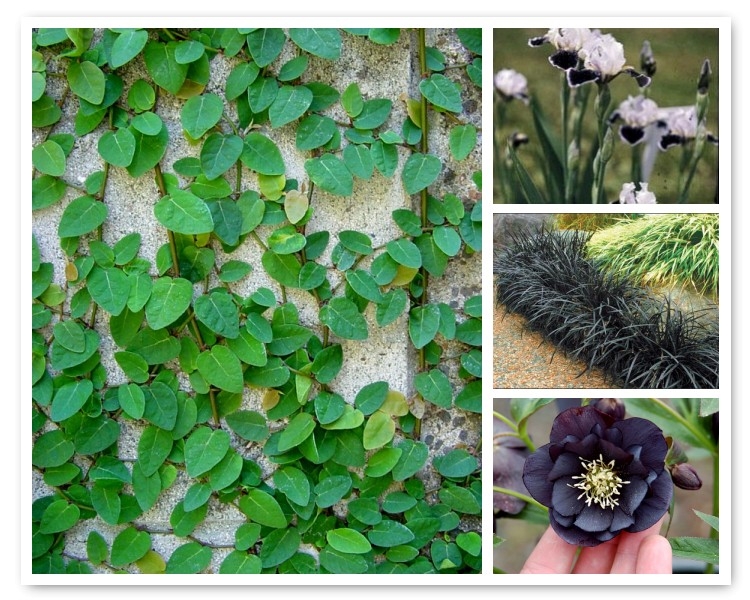 Included in this particular project there will be a discrete courtyard featuring a statue. We are using four different plants; Ficus pumila (Creeping Fig), Ophiopogon nigrescens (Black Mondograss), Helleborous 'Onyx Odyssea' (a double black flowering Lenten Rose), and Iris 'Frosted Velvet' (a "miniature tall" form Bearded Iris). The Ficus and Ophiopogon are evergreen and will form the main planting to show off the sculpture, then the Iris will be in bloom in the Spring with leaves from late Winter through Summer, and the Hellebores will be in bloom in Winter with leaves holding on through Spring. I don't expect to have both Irises and Hellebores flower at the same time, though it is possible that this could occur depending on weather conditions and temperatures (especially in the Bay Area). While the Irises prefer more sun and the Hellebores more shade, the site location and orientation make it possible to use both in the same small area.I presented the palette (above) to the client earlier this month. Before doing presenting, I learned that the Iris were not going to be shipped until next July, and that our local growers who carried the Hellebores had already sold out for the year. I explained to the client that we would be ordering the Iris for delivery nine months in the future and that the Hellebores would need to be ordered immediately from Canada before the grower's shipping season closed. He accepted the planting concept, so I had the plants ordered with delivery to my home. I did this for a couple of reasons:1. I wanted to inspect the plants before anyone else saw them to make sure there were no problems (and I work from home). Having them shipped to my home also meant that I could accept delivery at any time (they arrived today - the Saturday after Thanksgiving) regardless of holidays, weekends, and business hours.2. The plants would be shipped bare root and would need immediate attention by someone who knew what to do and had the time.3. The landscape contractor had not yet been formally retained.4. This also made me feel that I was giving my client the best service I could by personally protecting his investment in them and, by extension, his trust in me.It is my habit to order plants from all over the world. Because of this, I knew ahead of time that both mail order companies were reputable and that the plants would likely be in great shape. I was not disappointed! Fraser's Thimble Farms worked with me to hold the plants until the payment arrived. I took their advice to pay for air priority shipping. The plants also required a Phytosanitary Certificate (they were inspected by the Canadian Food Inspection Agency) before coming into the U.S. The shipment was also opened and inspected by U.S. Customs upon arrival.Below are some photos from this morning's potting:
Included in this particular project there will be a discrete courtyard featuring a statue. We are using four different plants; Ficus pumila (Creeping Fig), Ophiopogon nigrescens (Black Mondograss), Helleborous 'Onyx Odyssea' (a double black flowering Lenten Rose), and Iris 'Frosted Velvet' (a "miniature tall" form Bearded Iris). The Ficus and Ophiopogon are evergreen and will form the main planting to show off the sculpture, then the Iris will be in bloom in the Spring with leaves from late Winter through Summer, and the Hellebores will be in bloom in Winter with leaves holding on through Spring. I don't expect to have both Irises and Hellebores flower at the same time, though it is possible that this could occur depending on weather conditions and temperatures (especially in the Bay Area). While the Irises prefer more sun and the Hellebores more shade, the site location and orientation make it possible to use both in the same small area.I presented the palette (above) to the client earlier this month. Before doing presenting, I learned that the Iris were not going to be shipped until next July, and that our local growers who carried the Hellebores had already sold out for the year. I explained to the client that we would be ordering the Iris for delivery nine months in the future and that the Hellebores would need to be ordered immediately from Canada before the grower's shipping season closed. He accepted the planting concept, so I had the plants ordered with delivery to my home. I did this for a couple of reasons:1. I wanted to inspect the plants before anyone else saw them to make sure there were no problems (and I work from home). Having them shipped to my home also meant that I could accept delivery at any time (they arrived today - the Saturday after Thanksgiving) regardless of holidays, weekends, and business hours.2. The plants would be shipped bare root and would need immediate attention by someone who knew what to do and had the time.3. The landscape contractor had not yet been formally retained.4. This also made me feel that I was giving my client the best service I could by personally protecting his investment in them and, by extension, his trust in me.It is my habit to order plants from all over the world. Because of this, I knew ahead of time that both mail order companies were reputable and that the plants would likely be in great shape. I was not disappointed! Fraser's Thimble Farms worked with me to hold the plants until the payment arrived. I took their advice to pay for air priority shipping. The plants also required a Phytosanitary Certificate (they were inspected by the Canadian Food Inspection Agency) before coming into the U.S. The shipment was also opened and inspected by U.S. Customs upon arrival.Below are some photos from this morning's potting:
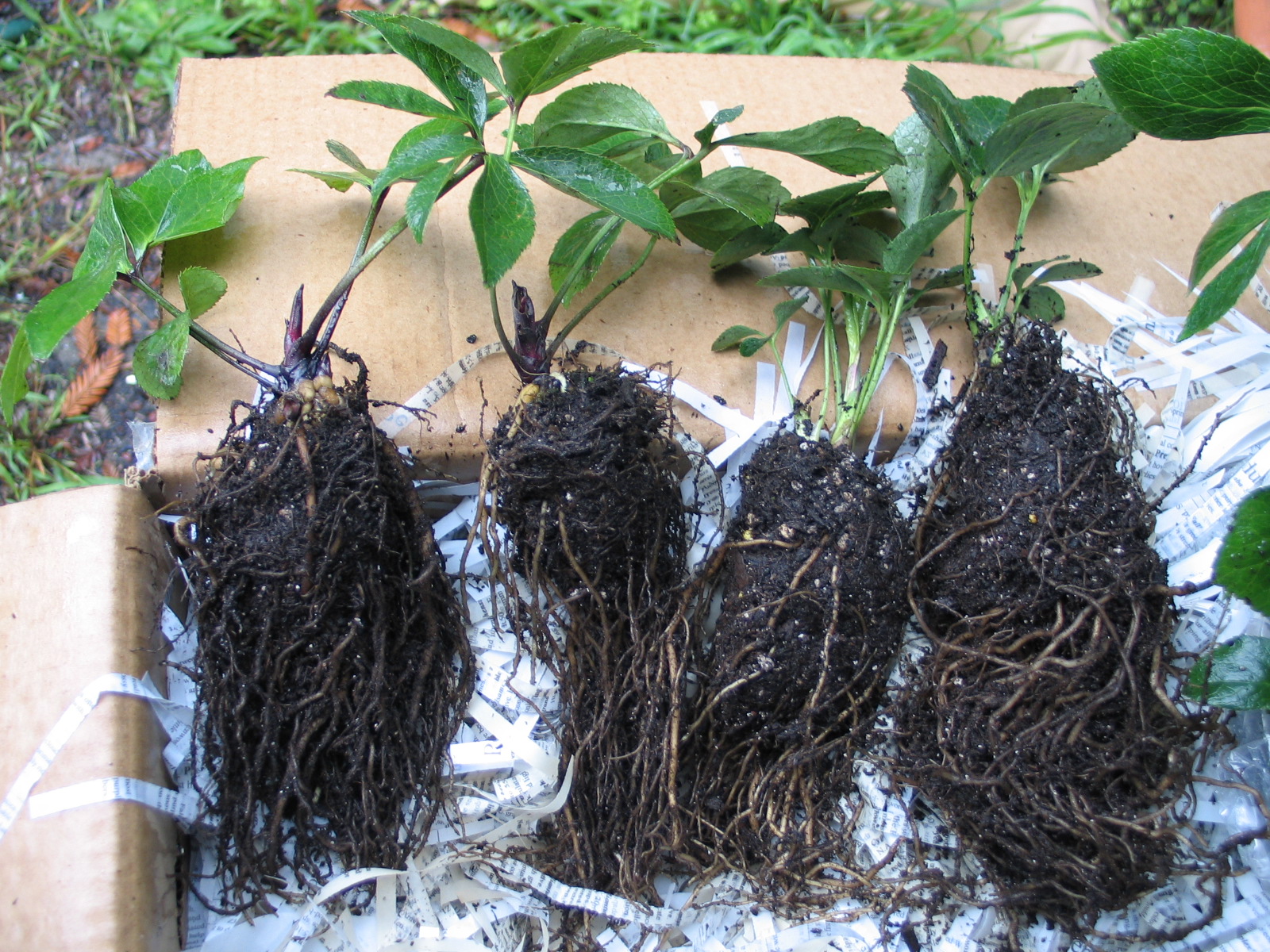
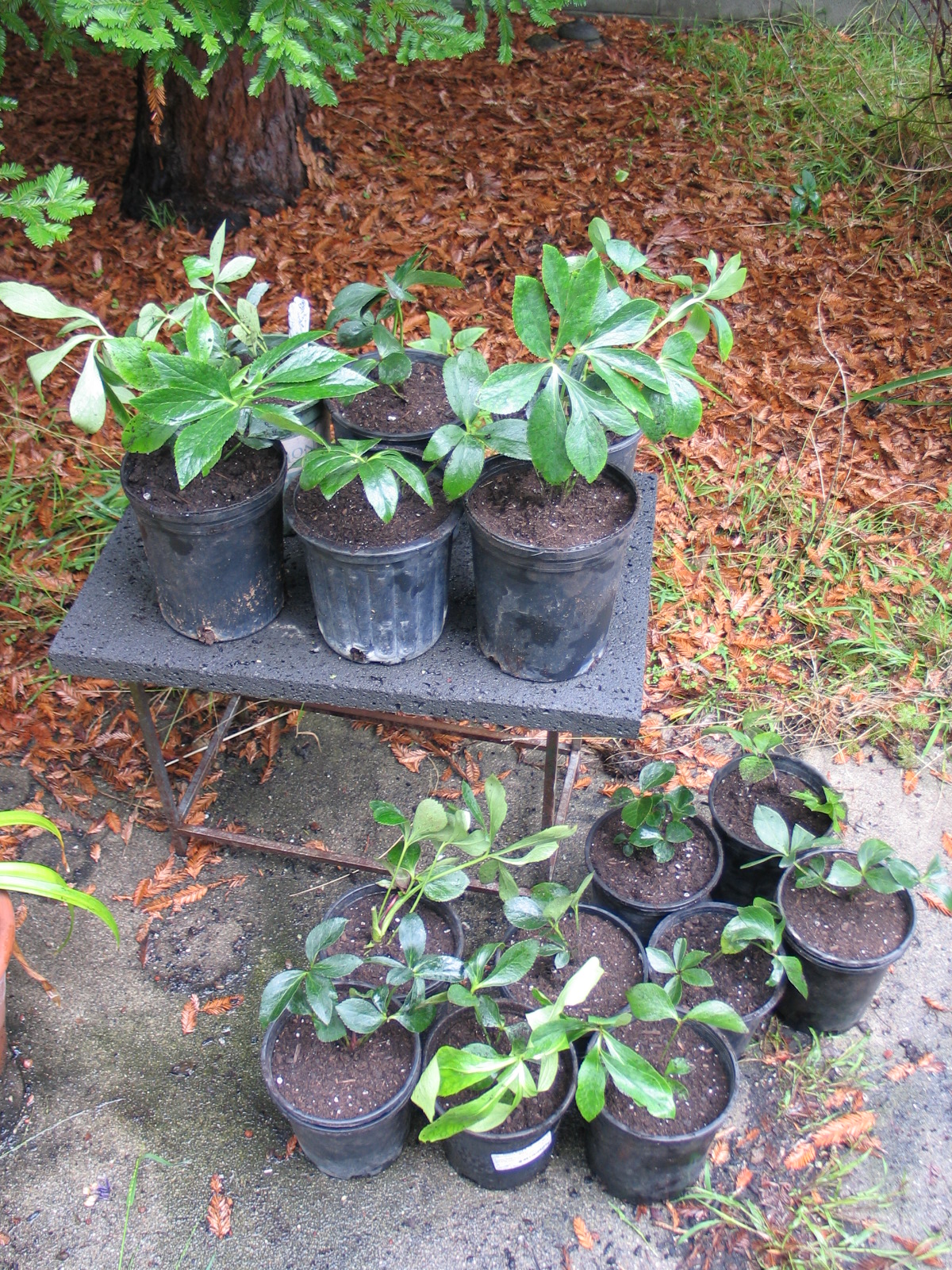 All in all, excellent plants - potted and ready for what comes next. My own Hellebores have not leafed-out yet, so it will be interesting to see how these behave, but they each have new growth on them (see the middle photo). They've been through a lot, being bare-rooted, inspected twice, then finally re-potted (they'll be disturbed again soon when they're planted in their new home).I have been frustrated in the past with the issues that come up when trying to design a garden around the seasonal availability of the plants I want to use. I think it is well worth the extra effort to get the exact plants desired rather than giving up and just finding something else that is less of a pain. I am looking forward to seeing them planted in their new home and will post again....
All in all, excellent plants - potted and ready for what comes next. My own Hellebores have not leafed-out yet, so it will be interesting to see how these behave, but they each have new growth on them (see the middle photo). They've been through a lot, being bare-rooted, inspected twice, then finally re-potted (they'll be disturbed again soon when they're planted in their new home).I have been frustrated in the past with the issues that come up when trying to design a garden around the seasonal availability of the plants I want to use. I think it is well worth the extra effort to get the exact plants desired rather than giving up and just finding something else that is less of a pain. I am looking forward to seeing them planted in their new home and will post again....
First Contact and The Lingo
"Could I request a post on finding and making first contact with a designer for those of us with gardens out of your jurisdiction so to speak? You’ve convinced me that outside help would be a good idea for my yard, but I don’t know where to go for it, and I don’t want to give the wrong first impression by not knowing the right terms."
Read moreFavorite Projects
About 5 years into my career, I left a job working on a wide variety of projects (hospitals, schools, trail systems, public parks, commercial spaces, but very few private residences) for a job that was exclusively private residences and estate work. I thought at the time that I was "looking for the soul" in Landscape Architecture....
Read moreHow to become a Great Client
I just got this blog post in my e-mail from Seth Godin this morning which ties in nicely with the book What Your Contractor Can't Tell You that my good friend Susan introduced me to. Nevermind that Mr. Godin uses logo design as his example, and never mind that the book focuses on working with Architects and contractors as opposed to Landscape Architects. BOTH sources discuss the same notion: being a "good" client, or at the very least, an informed one (weirdly, though, they seem to disagree on some points)."Good" clients are beneficial to the entire process, save everyone time, money, and headaches. The responsibility is not the client's alone, however. When the relationship between the client and the professionals they've hired is a productive one, the project always benefits. I am thinking about getting extra copies of that book for my office (knowing full well that suggesting to someone that they read either the post or the book won't necessarily result in them reading either). It is that good. No, really. The $15. you spend on that book can save you thousands in the long and short run. Not a bad return on investment!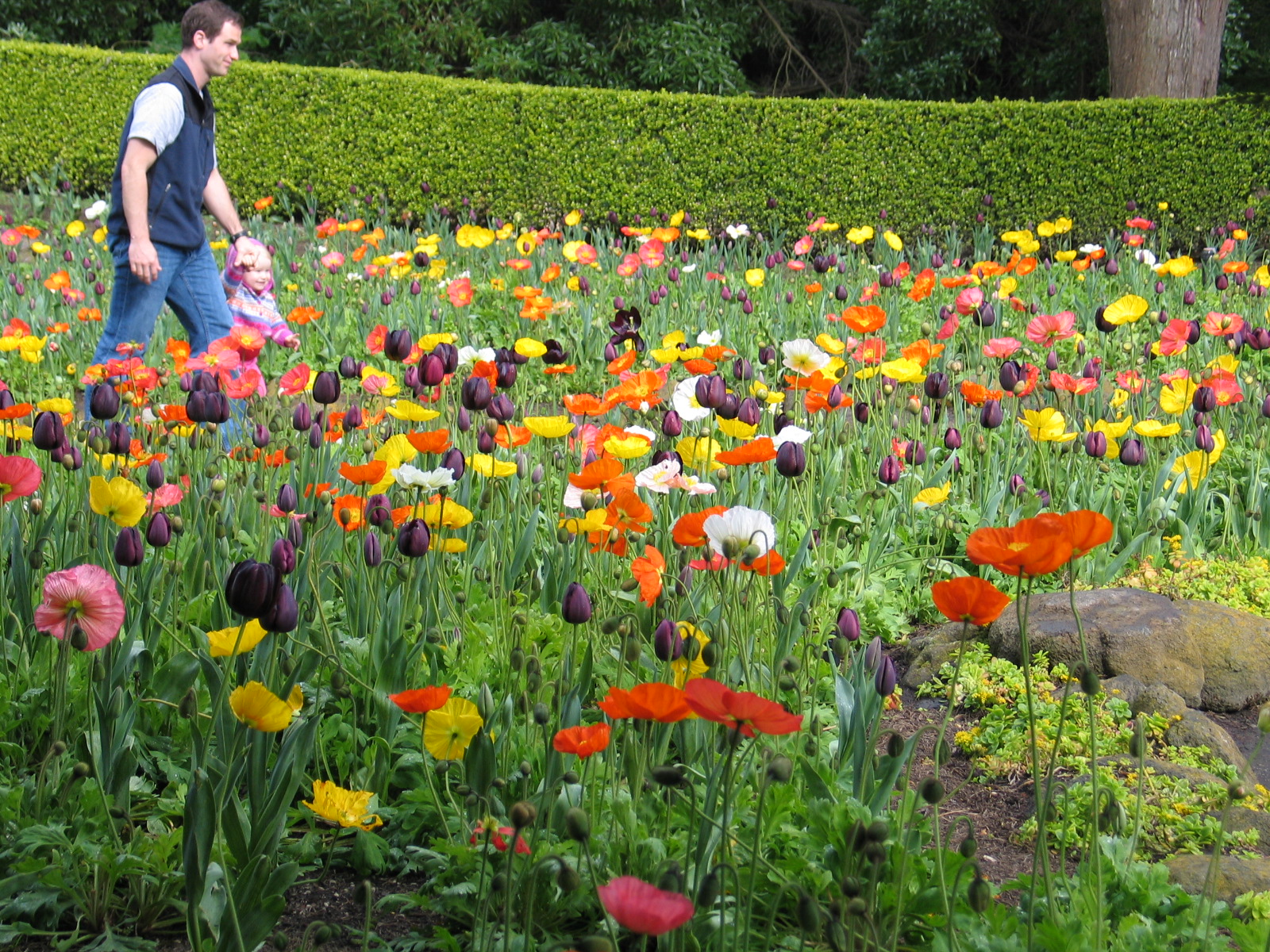 I leave you with images from the Windmill Garden in San Francisco - a seasonal planting that I really enjoyed back in April 2006.
I leave you with images from the Windmill Garden in San Francisco - a seasonal planting that I really enjoyed back in April 2006.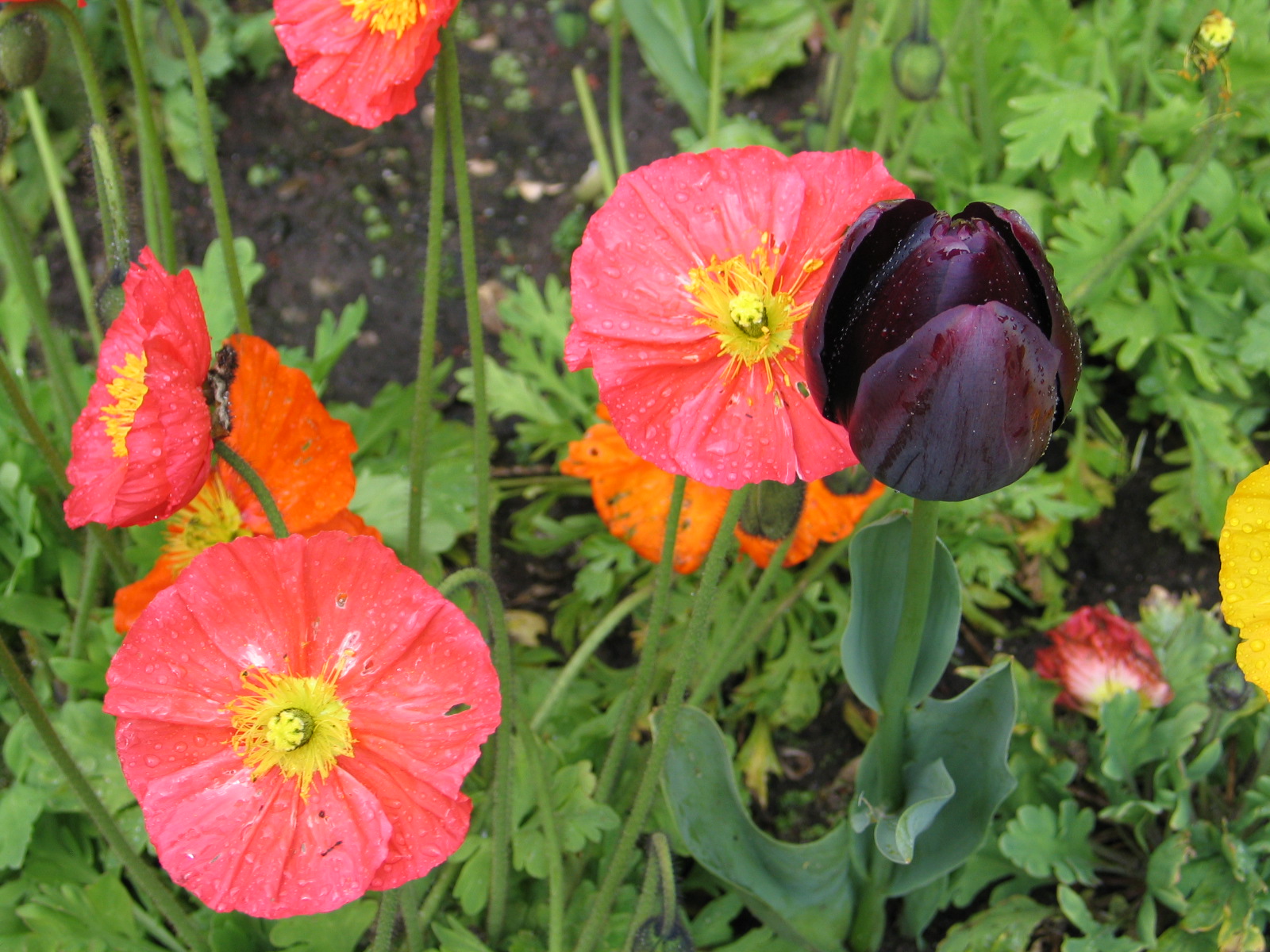
10 things to do/consider - client homework
Aristea spiralis 4
You took the first step and decided to call someone, I'm glad you found me. Do yourself a favor and start thinking about your project - I will bring my own ideas, what I need to hear are yours. Here's some things to consider and be prepared to chat about when we meet:
Read moreDesign fee negotiation?!
Osteospermum Sunadora 'Palermo' FL 1
I got into the design and Landscape Architecture business because I had one of those 'they pay people to do that?!' moments while looking for a major in college. I've been doodling, daydreaming, and designing as long as I can remember. I recently found a sketch I drew at about age 10 (?) of a pet store layout. I wanted a pet/people introduction room, an educational library, a little garden, a soda machine....I know I did a similar sketch for an imaginary plant nursery a few years later, I just can't find it.The point is that some designers (all of them?) entered their chosen industries because it is what they DO. Naturally. Automatically. All the time. Getting a degree and working in the chosen field for experience is just part of doing it professionally.When you are looking for a designer (of any sort), my personal take on it is that you want to work with someone who you like and who you think might understand you, all the better if that person has good taste. If your preferred designer charges a formidable fee for their time, it may be worth it to negotiate the contract so that you can work with the person you want to work with instead of looking for someone you can "afford". Perhaps that favored designer will sit down with you and brainstorm on the design for an hour or so. A napkin sketch and some notes can be all you need in certain situations. No contract is final until it is signed, see what you can work out!Keep in mind that bad design is just as expensive to install as good design! Unfortunately, it can cost you buckets more in the long run by lowering (at the very least not increasing) your property value.Good design is an investment - one that is just as important as the materials you choose to use and proper maintenance.
How long will it take?
pagoda lid flowers contest
How long will it take?Every client wants to know the answer to this question, and most want the answer right up front. Some even want to know before the designer has been to the site. Understandable, but unrealistic.In all honesty, it takes as long as it takes. One factor is coordinating the clients', designer's, and contractor's schedules. Everyone is busy, that is a part of life. There is sometimes a lot of time wasted waiting for meetings - simple math.Deciding: Some clients need more time to ponder decisions than others. It can take a while to get responses to calls made to a variety of consultants, municipalities, etc - research of any kind requires a bit of patience. Never mind the time required for neighbor comment periods in some areas (eeek)! There is also the design work itself and the time it takes to produce the documents needed for each meeting.Scope! Not the mouthwash. If the list of things that the designer and the client are working on together is extensive, that can take some time. It is funny sometimes, how designing for a residence can be as time consuming as for a public park. Projects on such an intimate scale, especially because they are where someone lives, can hold a great deal of meaning and detailing. Details all the way down to the angle of a drain cover in a field of paving are important at this level.Seasons and availability: Oh, my. Availability is one of the biggest stumbling blocks of Landscape Architecture and garden design. Materials come with their own special problems. Finding the materials desired is one thing, making sure that they're available and will meet the specifications is quite another. Stone for paving, depending on where it comes from, can be just as difficult to obtain as an out-of season plant. For instance, bluestone from back east, if still in the quarry, can be hidden under feet of snow for a good part of the year. I once had occasion to reject stone samples coming to California from Oklahoma three times because the ability of the quarry to cut the stone accurately wasn't within accepted tolerances and they persisted in sending samples of the wrong color.Add in the availability of plant materials at different times of the year and the lead times necessary for ordering certain kinds of plants, and it can take a good amount of time to install a garden that has exactly what you wanted. When planning for year-round interest, this can be particularly important. Spring bulbs are ordered in the fall (much cheaper to get the bulbs in the fall than try to find them growing in the spring!), fall bulbs are ordered in the spring. Bare root Roses are ordered in November or December, then delivered in January (here in N. CA). Most nurseries carry plants that are in bloom NOW, whenever now is, so if you are sourcing something through the wholesale or retail nursery trade, that can be pretty limiting.The bottom line? Patience. The design process can happen as fast as the designer can work and the client can respond....the rest is a matter of strategy and patience.
Why hire a designer?
grading study
No, seriously, why should anyone hire a designer? I am one, but I don't do it for the money, believe me! If I didn't adore garden design, I wouldn't be doing it.
I am sure I'll come back to this again and again. First off, let me note that there's a difference between hiring someone whose job it is to design for your project and act as your advocate vs. someone who's job it is to buy (and markup) the materials, install the elements, maintain it, or do any other sales-affiliated work. This 'sales' person could be an ambitious gardener, a design-build company, or a straight-up contractor. There is overlap everywhere, as soon as I say that contractors can't design, someone will send me a link to a contracting company that hires professional designers.
If knowing that the person you hire is interested only in the safety and aesthetics of the project, and is advocating exclusively on your behalf, you should hire a designer. It is your designer's job to be cost-conscious and to listen to what you need. I have worked in firms that charged design fees based on construction cost - I always hated that. There isn't a design fee difference in designing a patio out of bluestone vs. limestone or brick. If your fence is Pine or Redwood, the details take the same amount of time to draw. However, those folks in the 'sales' business have a different profit margin based on the cost of the materials you select.
I worked for a while as a designer at a retail nursery. It was my job to design plantings for people's homes. I was expected to use the plants currently in the nursery and not ask for a special order. If the client bought their plants from the nursery, the design fee (a whopping $50.) was waived! In addition, my clients got planting plans that were specific to the time of year that they hired us in. If someone came in during summer, they got summer season plants. The good part was that I could actually pull aside the materials I was proposing and set them aside for the client to see in real life. Today, I rely on digital images, sketches, and visits to multiple nurseries instead.
So why hire a designer? The expectation is that the design work will be well-rounded, fitted to your budget, lifestyle, and aesthetics. The designer should help you make sound decisions based on form and function, not their own bottom line.
It begins...with what clients don't know
G 'rozanne' 'Sailor' Lob 'laguna dk blue'
I've been thinking about blogging for a while now, wondering why anyone would spend time shoving their opinions out to the world and what it might be good for. I read a number of them, some blogs I actually look forward to reading, some I see again and again when doing google image searches. Somedays, I image search about as often as I inhale.So I got all arranged to blog. I made a list of topics I'd like to comment on, looked through blogs I like, considered photos from my existing image library, and took a lot of notes. I thought I'd get Organized (with a capital O!) and put post topics in some kind of order, set a schedule, blah, blah. However, today it is 88 degrees outside, I have a prospective new client on my mind, and I don't feel like worrying about The List.SO! My prospective new clients. We had an initial consult, I sent them a proposal. I am nervous that they'll see the design fee estimate and freak. What they don't know is that I started 'work' practically the moment they called. Well before our first meeting, I've seen their house. The first thing I do is google the address or drive by. That is all it takes to get my design ideas going. I already have a pretty good idea what I want to do for their front yard, at least the layout. They didn't have any strong feelings about it in our first meeting, so while I wait and hope that they sign the proposal, I have plant palette ideas, a layout, and some maintenance suggestions already in mind. They haven't paid me a cent, but I can't NOT design the garden.Clients often bellyache about design fees, the amounts of money they spend before they see any changes to the site. For them, this is part of the day, another thing on the to-do list. For me, it is all consuming. I think about it at the grocery store, in the car, on my nightly walks around the neighborhood. I re-design each (almost) house as I walk by or critique what is already there. Being a designer (I imagine) is different from being a cable installer or a secretary or even a doctor. When I leave the office, ideas are all around me. Plants, colors, textures, materials, are between me and everywhere I go. Site plans are in my head, what the client said is on my mind, the job comes with me. I garden at home and take pictures of everything. I am on the computer late in the night and most weekends, solid... and I wouldn't have it any other way.

